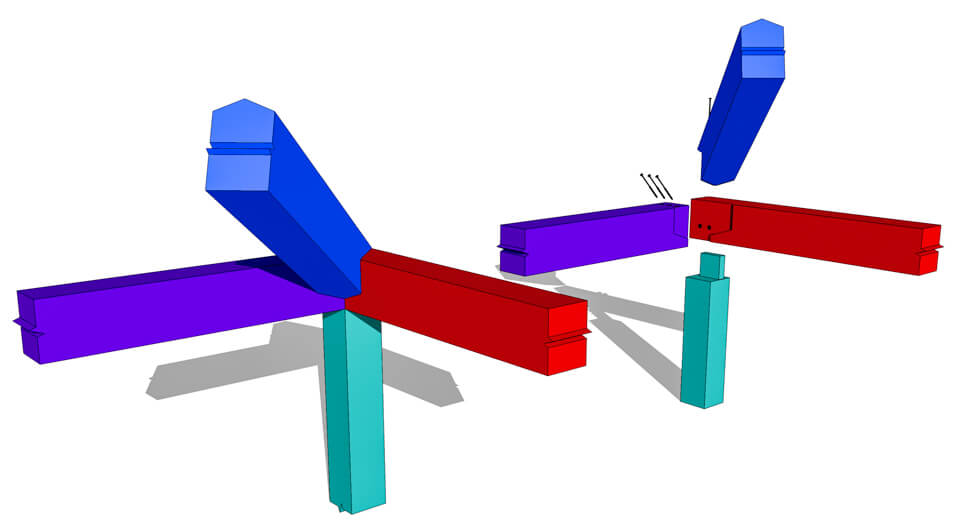
There is something beautiful about a timber framed hipped roof. From a design perspective, it allows an architect to transition a roof in a dynamic way. For the builder, it is the challenge of sorting out how to achieve the architect’s vision; and for the occupant, it gives the eye another path to take. While the compound joinery in the hip is more tricky to cut than a mortise and tenon, I have never met a timber framer that did not rush to cut them on a project.
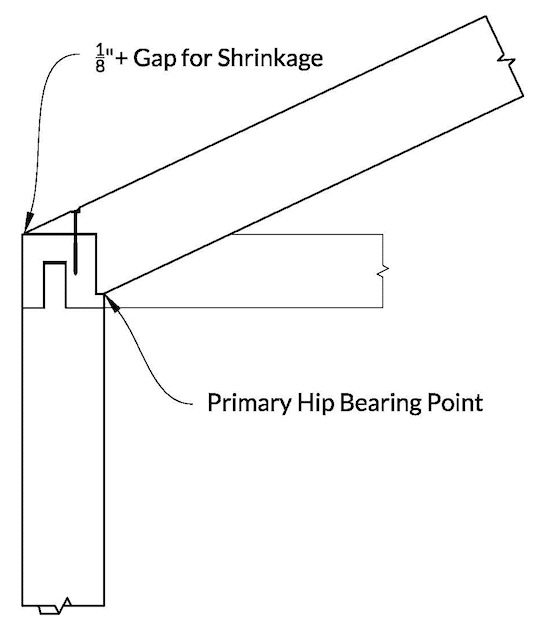
The hip is housed into the plates. In this example, there is a 1″ housing cut into the plates, allowing the roof load to be supported by the bearing surface of the housing and not the seat cut of the hip. Three structural screws hold the hip to the plate. A gap of 1/8″+ is cut into the hip seat cut to allow for shrinkage in the plates. In this detail, the plate to post connection for the red piece is a mortise and tenon and for the purple plate is a one inch housing into the red plate, with full bearing on the post and held in place with three structural screws.
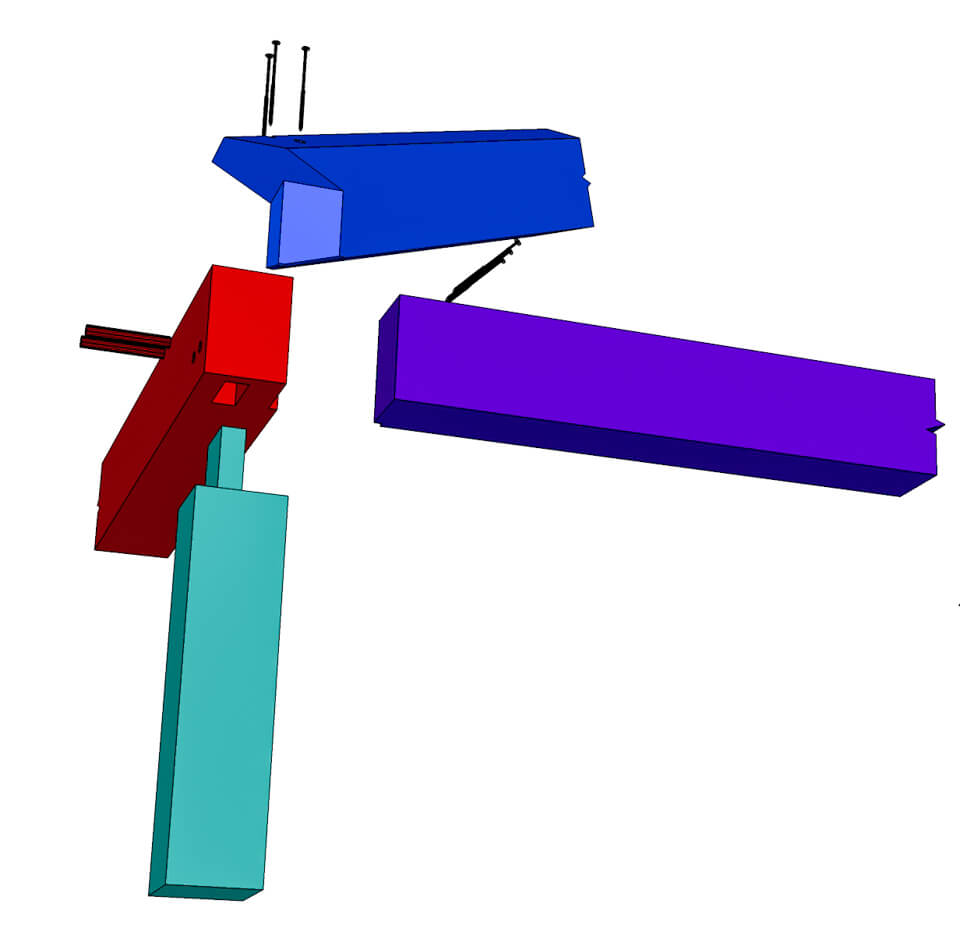
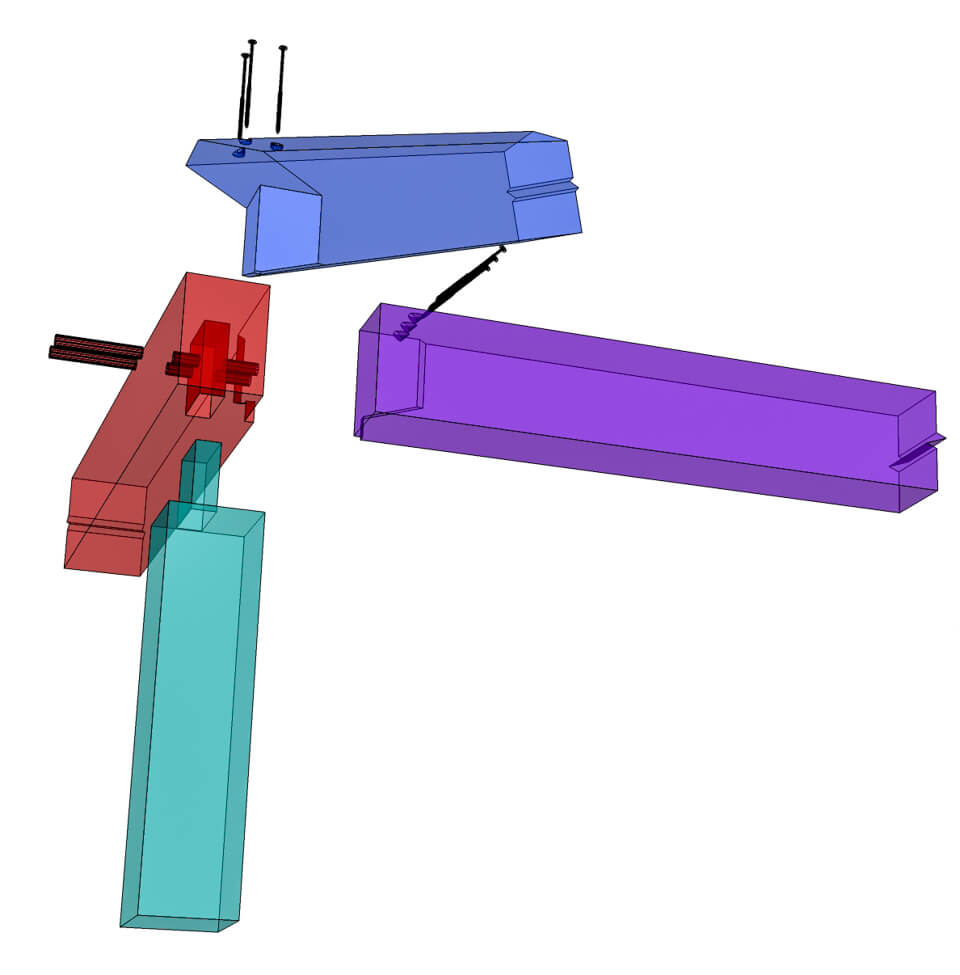
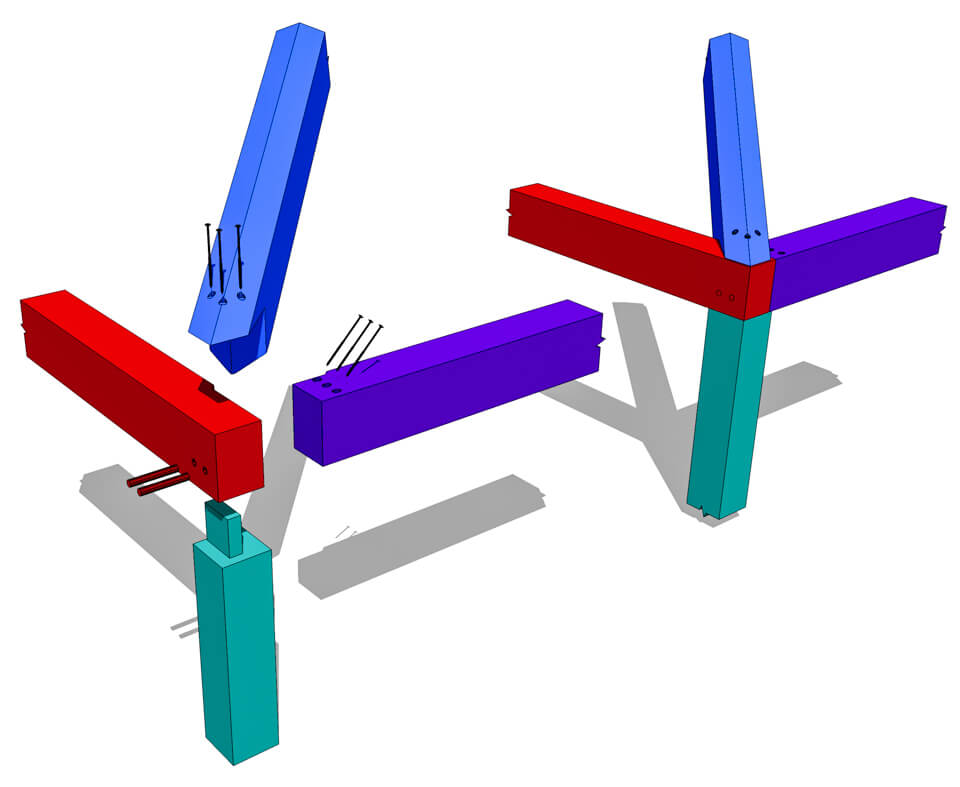

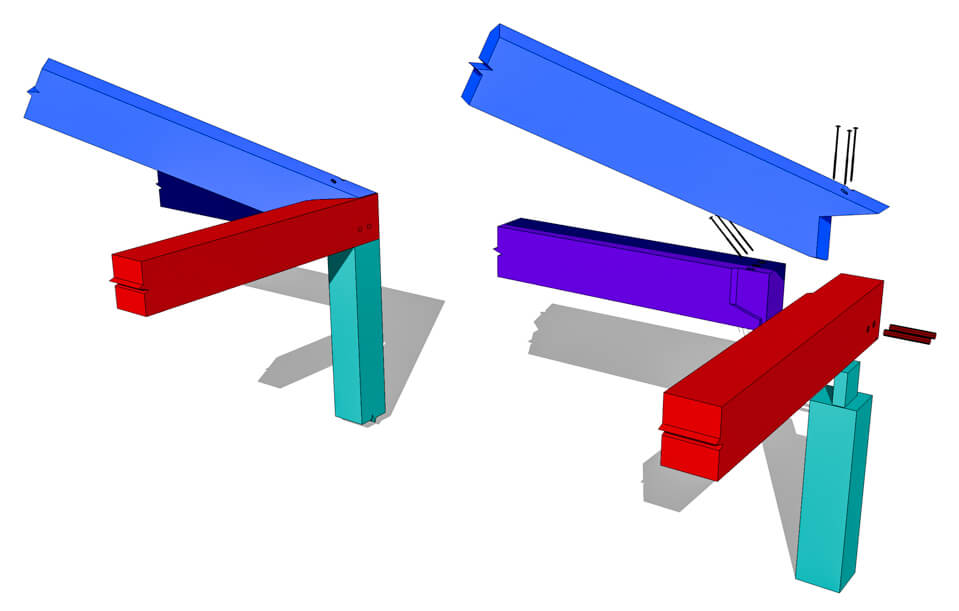
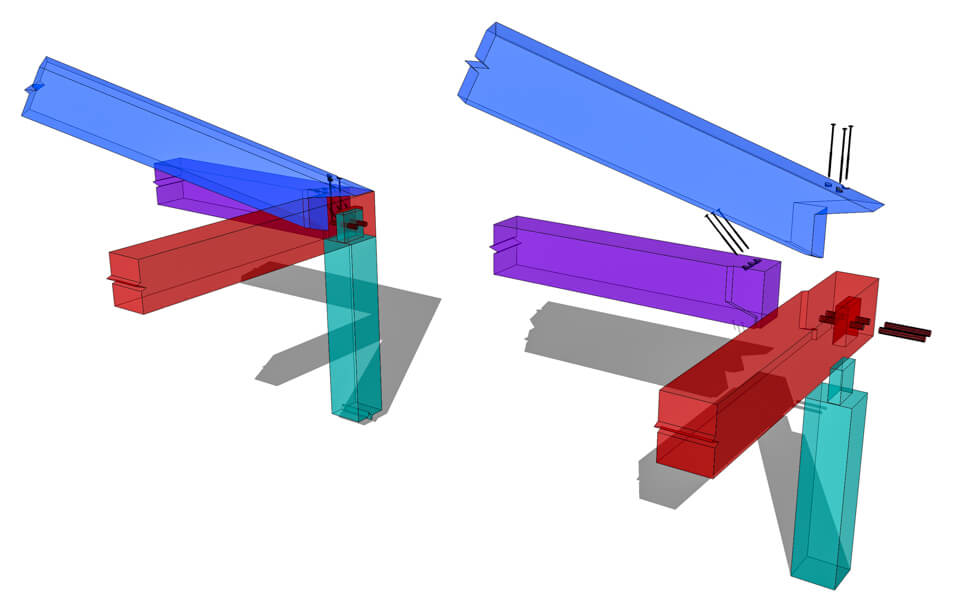
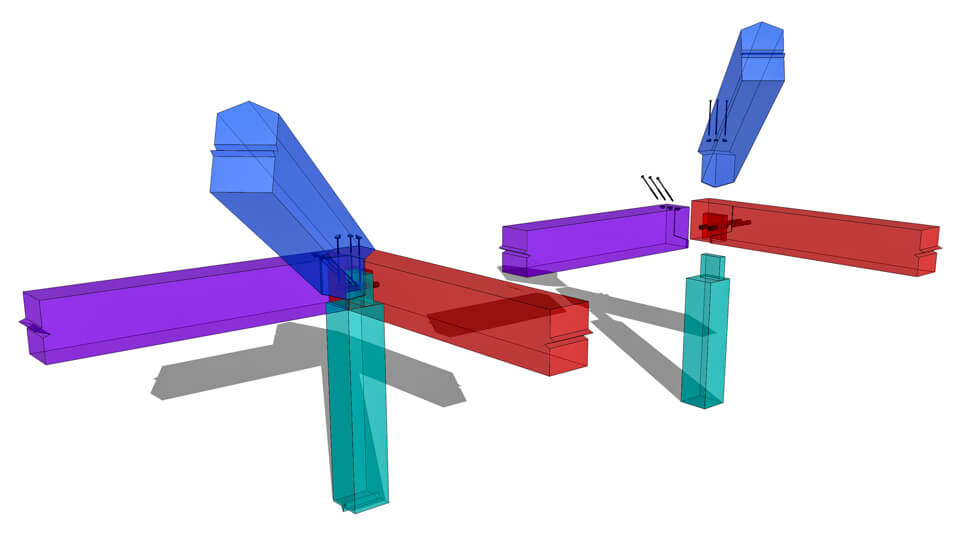
Can you send me the 3D model Sketxhup ?
How do you stabilize the wall vertically ?
It is acceptable compliance for building code IBC and canadian building code?
Do you have compliance with CCMC product?
Thanks
Georges Paquet
You can stabilize the walls by adding knee braces between the post and plate or in a exterior wall system. These types of joints vary greatly depending on the frame in which they are in so there is no reference on the codebooks.